PAROC eXtra slabs as additional insulation slabs for loft joists
|
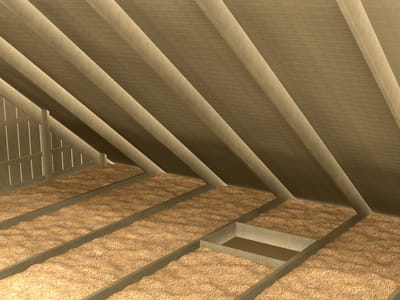
|
Inspect the condition of the old loft (insulation and structures). If the old structure and insulation are in good condition, add new insulation layers on top of it. If they are wet or mouldy, remove them. If there is moisture damage, pay special attention to the structure itself and repair if needed. Make sure that the loft joist system is airtight from moisture transmitting from below. Seal all lead-throughs.
|
|
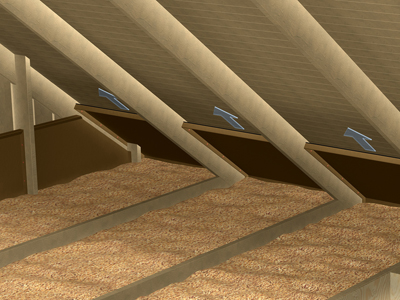
|
Install wind diverter boards to the base of the roof so that the top of the board is at least at 150 mm above the new insulation. Make sure that the air gap created between the new insulation and the roof is at least 20–50 mm.
|
|
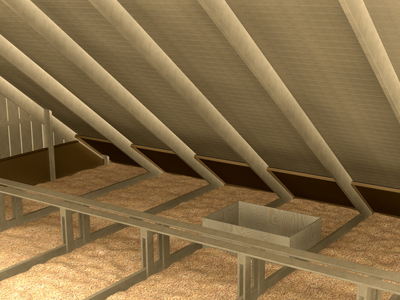
|
Erect bridges and a frame around the entry hatch that are at least 50 mm higher than the planned insulation layer.
|
|
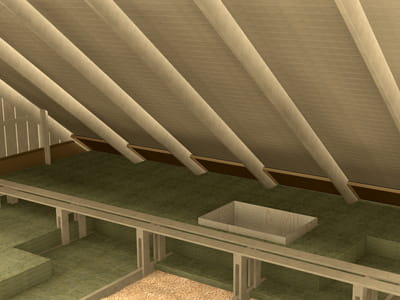
|
Start installing PAROC eXtra slabs from the corners of the gable and work towards the centre of the joist structure. Lay the first layer up to the top edge of the existing joist. Lay subsequent layers of PAROC eXtra using staggered joints.
|
Remember:
- Check that the roof is sound.
- Adding an extra insulation layer reduces the temperature in the loft. Therefore, ventilate the loft space well to eliminate mould problems by installing wind diverters or gable end vents.
- The wind diverters channel ventilation air along the roof through an air gap, which prevents air flows from penetrating the insulation and impairing its heat insulation properties.
- Remember to insulate all ventilation ducts and the entry hatch.
Blowing wool as additional insulation in lofts
There is usually plenty of available space for additional insulation in lofts. You can install blowing wool yourself or use professional help (if available in your country). These installation guidelines apply from step 1 to 3 to both cases, but step 4 applies only to when installing the extra insulation yourself.

|
Inspect the condition of the old loft (insulation and structures). If the old structures and insulation are in good condition, add new insulation layers on top of it. If they are wet or mouldy, remove them. If there is moisture damage, pay special attention to the structure itself and repair if needed. Make sure that the loft joist system is airtight for moisture transmitting from below. Seal all lead-throughs.
|

|
Install wind diverter boards to the base of the roof so that the top of the board is at least at 150 mm above the new insulation. Make sure that the air gap created between the new insulation and the roof is at least 20–50 mm.
|

|
Erect bridges and a frame around the entry hatch that are at least 50 mm higher than the planned insulation layer.
|
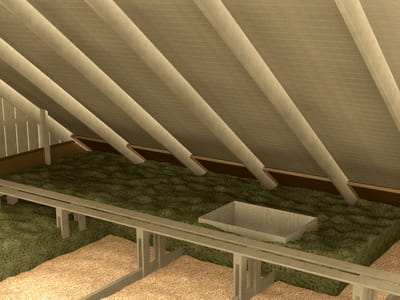
|
Install the blowing wool insulation with a blowing machine or fluff it up using a rake. Ask your local building material retailers about hiring a blowing unit wool machine. Use PAROC SHT 10 as insulation. Follow the instructions of the blowing wool machine manufacturer.
If you have only a small area to insulate, use PAROC IST 8 SHT 1 and fluff it up with a rake.
Start from the edges and then move towards the entry hatch. Spread the blowing wool evenly over the surface. Insulate a few square metres at a time to the required thickness.
|
Remember:
- Check that the roof is sound.
- Increasing the level of insulation in the loft reduces the temperature in the loft. Therefore, ventilate the loft space well to eliminate mould problems by installing wind diverters or gable end vents.
- The wind diverters channel ventilation air along the roof through an air gap, which prevents air flows from penetrating the insulation and impairing its heat insulation properties.
- Remember to insulate all ventilation ducts and the entry hatch.